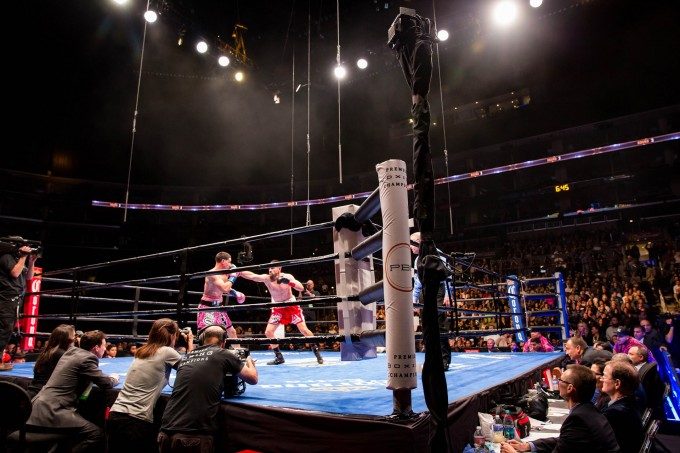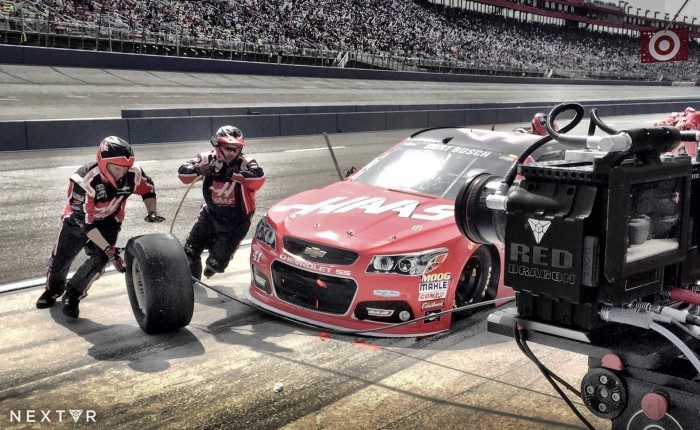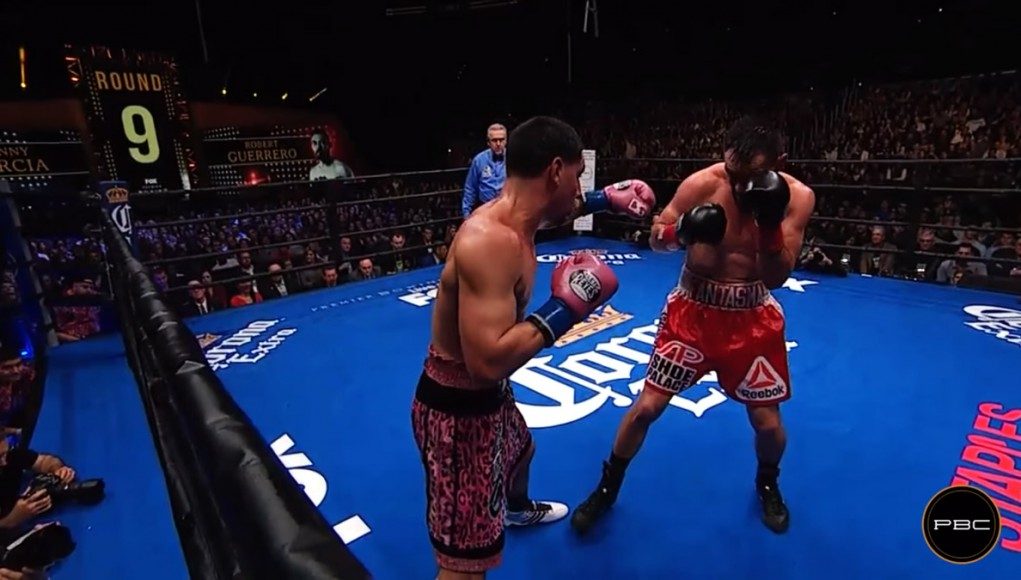We’ve seen VR live broadcasting company NextVR cover a range of sports and events, but its latest gig livestreaming a Premier Boxing Champions event was one of the best use-cases we’ve seen yet for the nascent technology.
 It was a matchup between the undefeated Danny “Swift” Garcia and former three-division world champion Robert “The Ghost” Guerrero at the STAPLES Center in Los Angeles, and felt like I was ringside. I watched, thanks to the Gear VR and NextVR’s broadcasting setup, as the two sparred right in front of me. I could hear their exhales as they swung powerful punches at one another. I could see the concentration on their faces. And boy… did I feel it when a substantial fist was landed on the opponent’s face.
It was a matchup between the undefeated Danny “Swift” Garcia and former three-division world champion Robert “The Ghost” Guerrero at the STAPLES Center in Los Angeles, and felt like I was ringside. I watched, thanks to the Gear VR and NextVR’s broadcasting setup, as the two sparred right in front of me. I could hear their exhales as they swung powerful punches at one another. I could see the concentration on their faces. And boy… did I feel it when a substantial fist was landed on the opponent’s face.

It was all happening live, right there in front of me. My vantage point, just above one of the corners of the ring, was closer than any ticket I could have bought for the match. I’ve watched boxing on TV, but never have I felt the visceral sense of someone taking a staggering punch to the face. WHAM. Through the headset I definitely felt it; I felt myself wince at the pain I just saw delivered.
This was one of the most compelling broadcast experiences I’ve ever seen in VR. I’ve seen tons of proofs of concept shot and delivered on myriad hardware. I’ve seen plenty of other NextVR content. But boxing uniquely fits in the sweet spot of our current technological limitations.

Like a few other VR video companies, NextVR is technically streaming 180 degree footage of the action (with the area behind you composited with a wallpaper of sorts). While 360 degree footage is more immersive, it’s also higher bandwidth, and stretches the available resolution over a wider area, lowering the DPI. At this point in time, 180 degree VR footage offers superior quality over 360 degree, especially for streaming. And while NextVR’s footage is some of the sharpest out there, it’s still well below the limit of the human eye.
The quality ceiling for today’s VR video tech currently rests more in our ability to display the footage than to capture it. NextVR is mostly shooting with high-end Red EPIC Dragon cameras which capture resolutions that exceed what the Samsung smartphones that power Gear VR can handle. And even if they could, the displays—currently topping out at 1440 x 2560—would be the next bottleneck.

This will improve over time, but it will be a while until we achieve a widespread VR pipeline that matches the quality perceptible by the human eye. Oculus’ Chief Scientist, Michael Abrash, supposes we’ll need something in the neighborhood of 16k by 16k displays (for a 100 degree field of view) before we top out on quality. Until then, some use-cases for VR broadcasting will be better suited than others.
NextVR livestreamed the first democratic debate of the US presidential election cycle a few months back. While it was exciting to see VR bringing the political process remotely to the people, a widespread complaint was that viewers were too far from the candidates to make out the detail in their faces.
In the boxing match, however, everything felt right. I was right in that sweet spot where resolution limitations didn’t detract from the experience. I could see the fighters’ tattoos and scowls, the ropes shaking, and the officials bustling ringside. More resolution would have been nice, but it didn’t feel like a necessity here.

It will take some time for the ‘pure’ VR video experience to reach the quality levels that we really want, but in the meantime, NextVR has some tricks up its sleeve. Not only is the company focusing on quality by choosing to shoot in 180 degrees, they’re also able to merge standard camera views into the VR scene, live and in real-time. This allows the company to benefit from broadcast ecosystem that’s already in place at such events.
One of the heavyweight bouts during the boxing event ended when one boxer delivered a particularly brutal uppercut to the jaw of his opponent. I saw (and ‘felt’) the punch land, but even with a futuristic VR headset of infinite display quality, there’s no way I’m going to get in there as close as a telephoto lens trained on the boxers. Fortunately, the slow-motion recap shot (as it would be broadcast to regular TVs) appeared as a floating screen within my virtual reality view—complete with broadcast commentary—giving me the best of both worlds.
NextVR has laid an impressive foundation for live VR broadcasting, and as the rest of the tech pipeline catches up it’s going to become even more compelling in more places.







